| Email not displaying correctly? Click here to view it in your browser. |

|
|
Hello forest supporters ...
Have your say on plans to blitz burn our forests DSE has prepared a draft Code for public comment in response to the Bushfire Royal Commission’s recommendations. This includes the controversial, ineffective and unachievable 5% target. The comment period closes on the 9th December – this Friday. Below the main section of this email are dot points that you might like to read. It gives a rough overview of how the environment is being overlooked in all this (thanks to the VNPA and Geoff L for this). Send submissions to: Fire_Code.review@dse.vic.gov.au A copy of the draft Code is available at the link below - with details of how you can make a submission/comments. Or else forget their sample of limited questions and do your own thing. Put it on your ‘to do’ list for the planet this week and get a comment or three in before Friday using the info at the end of this email, and or your own thoughts and experiences with their ‘control burns’. Thanks. www.dse.vic.gov.au/fire-and-other-emergencies/living-with-fire-victorias-bushfire-strategy/code-of-practice-for-fire-management-on-public-land/2011-code-of-practice-review The Durban round of talks on climate 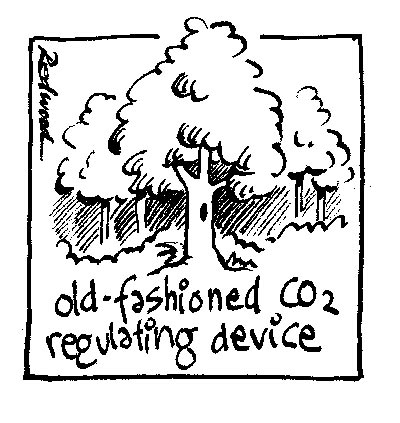 Will the Durban talks think to add forests into the climate solution mix this time? You can send Greg Combet an email asking him to commit to real forests and climate action at Durban using the form at this link. http://forestsandclimate.net/durban-gregcombet
Will the Durban talks think to add forests into the climate solution mix this time? You can send Greg Combet an email asking him to commit to real forests and climate action at Durban using the form at this link. http://forestsandclimate.net/durban-gregcombetHe has received dozens of emails already. And please forward to your networks if you think they’d be interested. Litany of illegal rainforest logging Yet more unlawful rainforest logging breaches in East Gippsland have been surveyed and formally reported to the DSE compliance section. Two weeks ago conservationists reported rainforest had been logged in the headwaters of the Bonang River on the Errinundra Plateau. The Department of Sustainability and Environment investigated the site and we are now awaiting their findings. VicForests’ logging operations should be halted while they are investigated – as any officer under investigation is stood down during similar claims of wrong-doing. There is clear evidence that logging coupes are marked out by incompetent officers or rainforest is deliberately ignored. Either possibility results in destruction of rare pockets of rainforest for the few trees that grow within them. 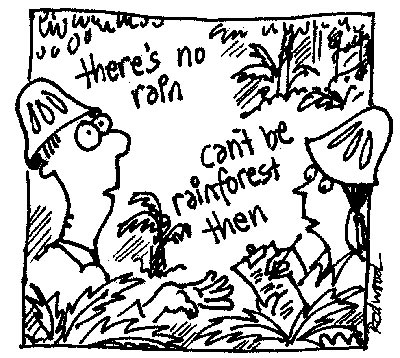 Breaches reported recently include logging of Warm Temperate Rainforest along Old Bonang Hwy in the Curlip forest block. Rainforest species including Jungle Grape and Lilly Pilly and the bird Bassian Thrush were recorded at that site. The Mount Buck Rainforest Site of State Significance along Major Creek has also been logged. Rainforest Sites of Significance are listed because they have outstanding values. Further west, along Cherry Tree Track, yet more logging of rainforest has been detected, inside the 40 metre buffer required to protect rainforest in Victoria from logging impacts. These rainforests have taken hundreds of years of fire-free conditions to develop. Once logged and burnt as part of logging ‘management’, they are lost forever. VicForests is still being handed our forest to clearfell when it’s been shown time and time again that they are breaking the law. Illegal Timber Trade The Federal Government has introduced the Illegal Logging Prohibition Bill (2011) to the House of Representatives. This law would prohibit the importation and sale of illegally logged timber with a penalty of up to five-years in prison. The media statement, among other things, says: “The Bill will make it an offence to import timber and process domestic raw logs that have been illegally harvested” Now before you get too excited about the seeming inclusion of illegal logged trees within Australia as well, the bill proposes that they will assume that we don’t do such things here in Oz. And just to reduce compliance and admin costs, the processors will merely be required to sign a statement of compliance as part of the ‘due diligence’ section of the bill. It’s a bit like asking India to promise they won’t process our uranium for anything but charitable uses. 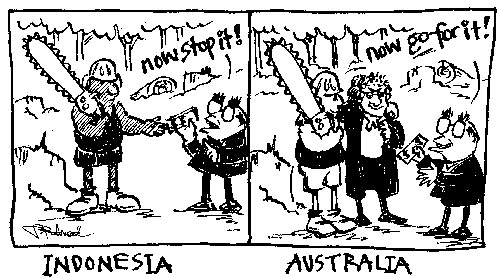 "Processors are required to complete Va statement of compliance with the due diligence requirements of the bill. As Commonwealth, state and territory laws relating to the legality of timber harvesting in Australia are comprehensive and robust, the Commonwealth government will seek to align the due diligence requirements of the bill with the pre-harvesting approvals processes of relevant state and territory governments to reduce compliance and administrative costs. The content and form of the statement will be prescribed by regulations." Legal Briefing on Changes to Protecting Threatened Wildlife 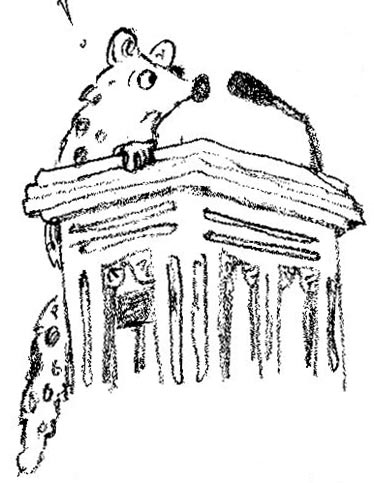 The Environment Defenders Office (bless them!) have written a report on the proposed changes to the Code that aims to exempt logging from the FFGA. You can download that three page report here:
The Environment Defenders Office (bless them!) have written a report on the proposed changes to the Code that aims to exempt logging from the FFGA. You can download that three page report here:http://www.edovic.org.au/sites/default/files/files/edo_vic_forestry_code_changes_briefing.pdf Their closing paragraph reads: “For the reasons above, the proposed variation should be abandoned in its entirety”. VicForests promotes little thought We were surprised to see this admission in VicForests annual report. (Page 11 of the VicForests Annual Report 2010-11.)  As someone said "Does the fact they have to go on lean thinking training have anything to do with them all being fat heads? Logged forests - Fail to regrow This year's recently released report about logged forest that are handed back to DSE to manage after being logged by VicForests confirms that VicForests is still struggling to meet its commitments on regeneration. The URS audit into VicForests that was released last year warned that they were not returning logged forests to DSE quickly enough and that a large backlog of unregenerated forest was building up. 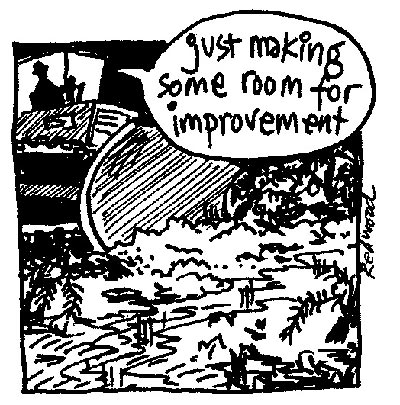 Since VicForests started operating in 2004, in all but one year the area of forest returned to DSE has been significantly smaller than the area logged. VicForests logs 4-5000 ha each year and this year only 2,550 ha will be handed back. We have been tracking VicForests performance in East Gippsland and are alarmed that there are still over 40% of the forests that were logged in 2004-05 that still have not been returned.
Since VicForests started operating in 2004, in all but one year the area of forest returned to DSE has been significantly smaller than the area logged. VicForests logs 4-5000 ha each year and this year only 2,550 ha will be handed back. We have been tracking VicForests performance in East Gippsland and are alarmed that there are still over 40% of the forests that were logged in 2004-05 that still have not been returned. The report also shows ongoing and appalling levels of noncompliance with environmental standards during thinnings operations (thinning regrowth stands to provide pulp logs to Eden). Every ‘handback’ report since Vicforests commenced has been highly critical of its noncompliance during thinnings operations, and despite these adverse findings, the results this year are worse than ever! During an audit of these operations, DSE checked 12 coupes and found that 75% had failed at least one Code standard, with several stands of regrowing forest recoding more than 50% damage. After 4 years of failures, VicForests response to this fiasco is to introduce some training for operators - so I guess from this we can conclude that up until now, VicForests has been employing untrained cowboys to run around smashing up the forest. As part of the Government's new "independent" audit program by URS, DSE was due to release an audit of VicForests’ regeneration program earlier this year. Despite numerous requests from Luke Chamberlin at the Wilderness Society, DSE has still not released the report. A plea to help the WA bushfire victims – rare cockatoos. In the controversial human-orientated coverage of the WA fires, there has been virtually no mention of the impact on wildlife - particularly threatened species. Colleagues over in the south west, are wildlife carers who are totally devoted to helping rescue and rehabilitate native wildlife. Below they are appealing for help to feed starving animals. The blaze that has burnt out more than 38 000 hectares of bush near Nannup destroyed feed trees in what was important habitat for a number of colonies of black cockatoos, and at this time of year, the bulk of their feed in the flowering seed trees ( jarrah and marri) has been burnt out. Dave and Dee Patterson are local cockatoo carers (and forest activists) who are now supplementary feeding large numbers of cockies daily, in addition to the 70+ rehabilitated birds they already have. Most of these were victims of the last fire! when Dave and Dee stayed at the property in the midst of the area's evacuation to be able to feed and care for the birds. They had intended a release of Carnaby's and Baudin's cockatoos into neighbouring national park, but scheduled burning, and now these out of control fires, has made this an impossibility. Dave and Dee are now buying seed commercially to feed the birds coming in each day, and funding this personally. Given the extent of the fires, it is unlikely that these birds will be able to feed in the area for some time. It would assist tremendously if anyone is able to make a donation (even $20), to chip in and help cover the costs of this rescue operation. Their bank details are: Dave and Dee Patterson ANZ bank bsb 016 580 a/c 5551 75146 Please use 'birdseed' in the reference field of any donations to Dave and Dee's account, this will enable them to easily track it, and provide the cost information to DEC and for any WA forest alliance campaign comment on the fire and community response. If you'd like any more information, images of the aviary and the birds coming in, or have further ideas about this, feel free to give Lauren a call (0308 748 939), or Jess Beckerling 0488 777 592 – who are working to get this story properly covered in the media. Notes for submission on Code of Practice Royal Commission recommendation 59 for a Code of Practice should be seen in the context of Chapter 7, ‘Land and fuel management’, in the Commission report. The opening paragraph of their section 7.4.6 on the Code of Practice lists the protection of biodiversity among the obligations to be met. Further on it lists a number of items that the Code should make explicit. These include (last dot point on p. 302): ‘The purpose of landscape mosaic burns is clarified and described... and understanding is developed about their interaction with biodiversity values.’ Recommendation 59 should also be seen in the context of recommendation 57 which calls on DSE to report annually on prescribed burning outcomes, including impacts on biodiversity. Despite this having been a mandatory action under their last Code, it was never done. Treatment of biodiversity in the draft Code of Practice The draft Code of Practice gives as one of its objectives (par. 4): ‘To enhance the resilience of our natural ecosystems and their ability to deliver services such as biodiversity, water, carbon and forest products.’ In fact this emphasis on ecosystem services runs throughout the draft Code and seems to reflect a thoroughly utilitarian view of the ecosystems. There is no indication that these have their own intrinsic value. Moreover, there is little emphasis on biodiversity. In its principles for fire management, the code (par. 22) specifies ‘the use of fire to ensure... natural diversity to maintain healthy ecosystems, species mix, structure, function and supply of ecosystem services such as water and carbon storage’. While this principle is fine as far as it goes, all of these matters need to be spelled out in detail but the draft Code neglects to do this. In par. 53, the draft Code lists ecosystem services as one of the various values to be resolved in risk analysis. Biodiversity is not mentioned. Par. 117 lists a strategy to manage fuel ‘to increase the resilience of our natural ecosystems, and their ability to deliver services such as biodiversity, water, carbon and forest products’. However, in the ‘actions to achieve strategies’ no details are given as to how this will be approached. And note again the emphasis on ‘services’. Within the Ecological Management Zone the draft Code (par. 141) aims to achieve ecologically appropriate fire regimes for native species and communities with specific fire requirements and to manage the land for forest regeneration, protection of water catchments, etc. This glosses over the complexity of the diverse responses to fire in different ecosystems and the fact that some communities require long intervals between fire or perhaps no planned burning. In its recommendations on monitoring, the draft Code lists ‘fire ecology and ecosystem service responses to fire’ (par 202). There is no further detail, and again note the emphasis on services and no mention of biodiversity. Comparison with the 2006 Code of Practice In the consideration of biodiversity the draft Code is inferior to the 2006 Code of Practice that it is replacing. For example, the 2006 Code specifies Environmental Management Principles (pars. 66-74), with some detail on matters relating to biodiversity. This concern follows through in the Fire Ecology Strategy (pars. 121-132), and in discussion of the Ecological Management Zone (pars. 167-172). In its section on monitoring the 2006 Code provides some detailed prescriptions regarding biodiversity (pars. 237-240), including consideration of species and vegetation types that are particularly sensitive to prescribed burning.
|